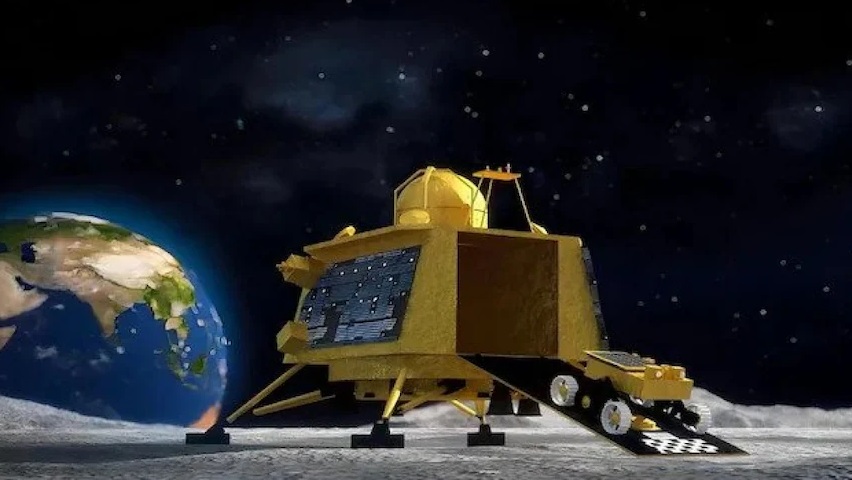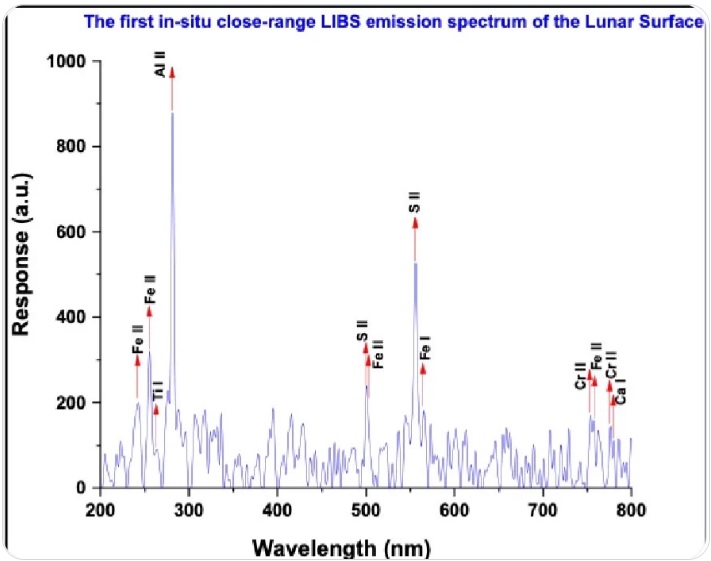Chandrayan-3, What India finds so far on the Moon
The Indian Space Research Organization (ISRO) has made significant discoveries concerning the moon by Chandrayan-3. Related to temperature, presence of several elements, including oxygen, detecting natural events and lunar plasma environment. Trending : Riyadh Airport is now offering Sleeping pods to Passengers
The Chandrayan-3 mission consists of three modules, the propulsion module, which moved the lander and the rover module into a 100-kilometer lunar orbit. The lander module, which carried out the lunar craft’s soft landing and the rover module, which is used to explore the moon’s surface.
What Chandrayan-3 found so far :
On August 23rd 2023, Chandrayan-3 made a soft landing on the south pole of the moon. Since that time, it has been carrying out groundbreaking scientific research because no other nation has ever made a soft landing on the south pole of the moon.
– ISRO chief S. Somnath previously stated that the South Pole was chosen because it receives less sunlight and may be suitable for human colonization. Most Viewed : Roshn launches MARAFY, A man-made canal in Jeddah to redefine urban life

Moon Temperature :
The moon’s soil temperature was measured by Chandrayaan-3 and some fascinating findings were found. The temperature ranges from -10 degree Celsius to around 70 degree Celsius.
– Minus 10 degree Celsius was recorded at 80mm under the ground of the moon and 60 degree Celsius was recorded above ground around 20mm. Recommended Video : GACA new regulations for Airlines and passengers

List of Items Chandrayan-3 found on the Moon :
Chandrayan-3 has confirmed the presence of Sulphur (S), Aluminum (Al), Calcium (Ca), Iron (Fe), Chromium (Cr), Titanium (Ti), Manganese (Mn), Oxygen (O) and Silicon (Si) on the lunar surface near the south pole. ISRO has released a chart showing the presence of these elements at various ranges corresponding to the wavelength.
– The results are important because Chandrayaan 3 will advance in its hunt for water on the moon if it discovers the hydrogen it is looking for. See Also : Saudi Arabia to become Global Logistical Hub, Saudi Crown Prince launched master plan

Chandrayan-3 Lander recorded a Natural Event (Is it Moon Quake?) :
According to the ISRO, the Vikram Lander on Chandrayaan-3 has detected a “natural event” that could be an indication of seismic activity close to the South Pole on the Moon’s surface.
– The lander’s seismic activity-detecting instrument, the Instrument for the Lunar Seismic Activity (ILSA) payload, also picked up vibrations caused by the Pragyan rover and other payloads motions.
– The motions of the Rover and other payloads were captured by the Instrument for the Lunar Seismic Activity (ILSA) payload on the Chandrayaan-3 Lander, the first MEMS-based instrument on the moon. Like and Follow Saudi Expatriates on Facebook
– On August 26, 2023, it has recorded what appears to be a natural event. The cause of this incident is being looked into. Measurement of ground vibrations caused by natural quakes, collisions, and manmade events is the main goal of ILSA.
Lunar Plasma environment :
ISRO said that the initial analysis of the RAMBHA-LP payload’s first-ever measurements of the near-surface lunar plasma environment over the south pole region shows that the plasma there is relatively sparse.
– These numerical measurements might help reduce the noise that lunar plasma adds to radio wave communication. They might also help improve the designs for future lunar travelers, according to ISRO.
– The findings are revolutionary because lunar plasma’s thinness has an impact on how radio waves go across space. The density of the plasma has an impact on radio waves; the more the plasma is thick, the more scattered the radio waves are.
– Radio waves can travel through space with less attenuation because lunar plasma is scarce, according to ISRO, which is crucial for communication between lunar missions. Subscribe to Saudi Expatriates on YouTube

Rover covered 100m on the Moon in just 10 days:
Pragyan Rover of Chandrayan-3 moved more than 100 meters from the Lander Vikram on the moon surface as of 2nd September 2023. Which marked only the tenth day of its deployment. It occurred early on August 24, some hours after Vikram’s soft-landing on August 23, 2023.
– Rover has been moving for 167 minutes over the course of these days, while moving at only 1 centimeter every second and facing numerous challenges. Its movement is severely limited by its size and design, necessitating careful preparation, which is why. Only about 5 meters can be moved as part of any ISRO mobility strategy.
– It had to overcome challenges as well. For example, it securely passed a 10-centimeter-deep crater and avoided a larger, time-consuming crater with a 4-meter diameter, which was 3 meter ahead of its location. The South pole of the moon is full of such craters. Viewable Story : Largest countries by its Size

Chandrayan-3 Mission goals met, Vikram lander and Pragyan rover has been put on Sleep Mode :
According to the ISRO statement on Saturday (2nd September 2023), the Rover Pragyan module of the Lander Vikram has been put on sleep mode on Saturday. The next sunrise on the moon is expected to be on 22nd September 2023, and hoped for a successful awakening for another set of assignments.
– The Rover Pragyan completed its assignments. It is now safely parked and set to Sleep mode. Payloads of APXS and LIBS are turned off. The Vikram Lander uses several payloads to transmit data to the Earth. The battery is fully charged right now. The solar panel is set up to catch the light on September 22, 2023, when the next sunrise is expected to occur on the moon. The receiver is kept on. wishing for a fruitful awakening for a new set of tasks. If not, it will remain there permanently as India’s lunar ambassador, added the ISRO. Trending Story : Most populated countries in the World
Chandrayan-3 Mission :
India has become only the fourth country to land on the moon thanks to the Chandrayaan-3 mission, which also made it the first country to send a spacecraft to the moon’s unexplored South Pole. Only a few days before to the landing on Wednesday (August 23), a similar mission by Russia’s Luna-25 ended in failure.
India’s Next Mission Aditya for the Sun :
On Sunday (2nd September 2023), ISRO successfully launched its Aditya-L1 Mission for the the Sun (India’s first solar observatory to the destination of Sun-Earth L1 point). Read : Sunflower seeds promotes Healthy skin and is an Antioxidant
1 thought on “Chandrayan-3, What India found so far on the Moon”
Comments are closed.